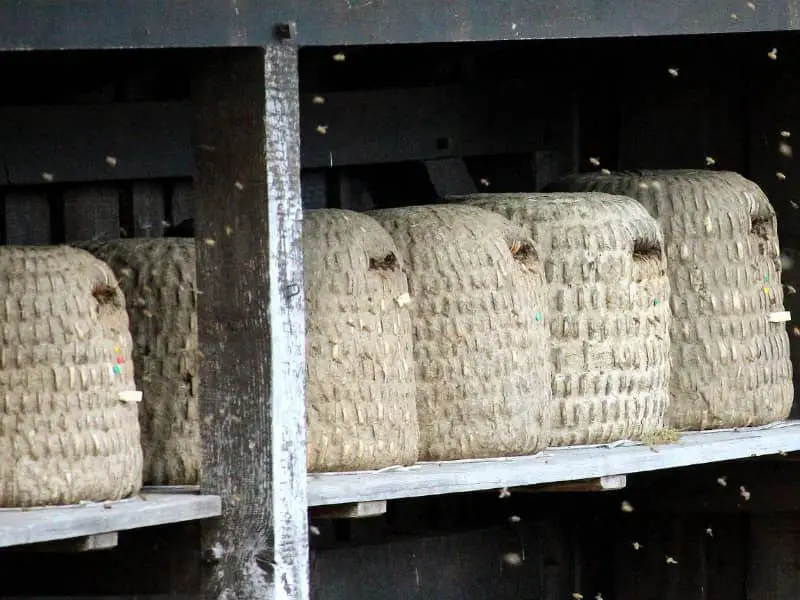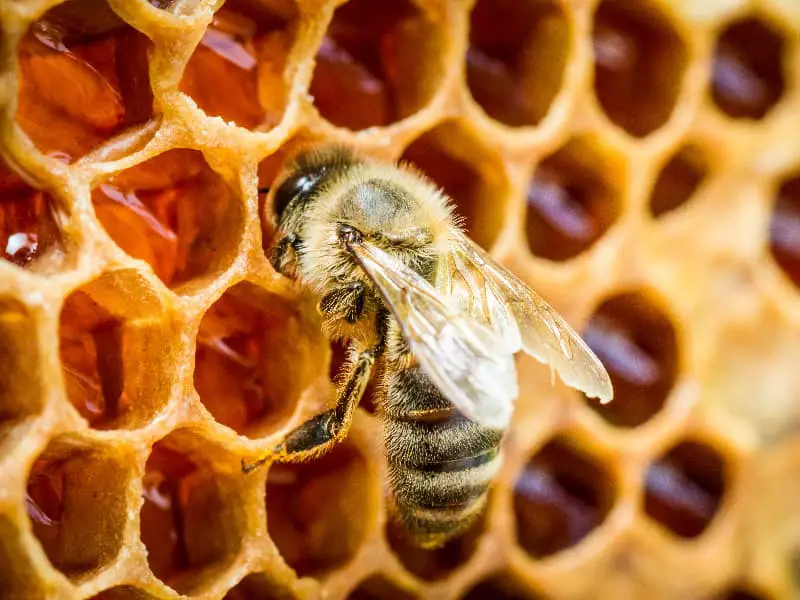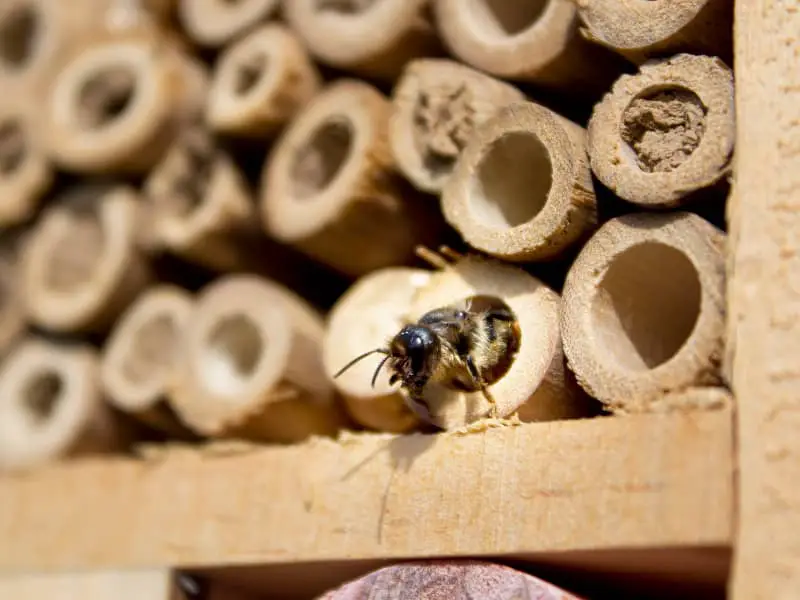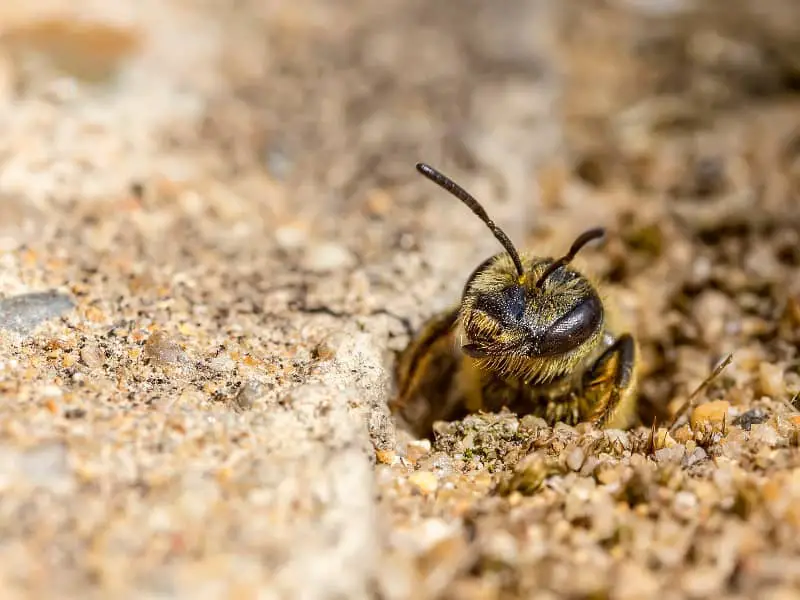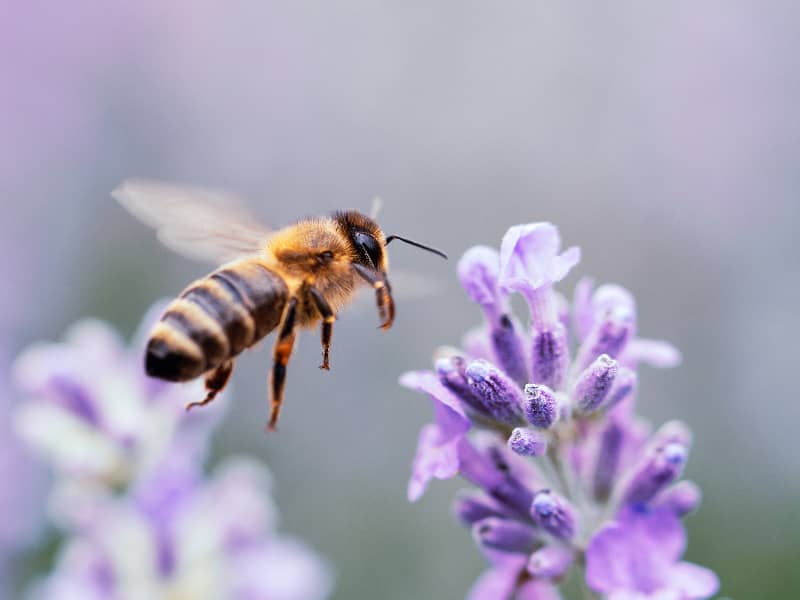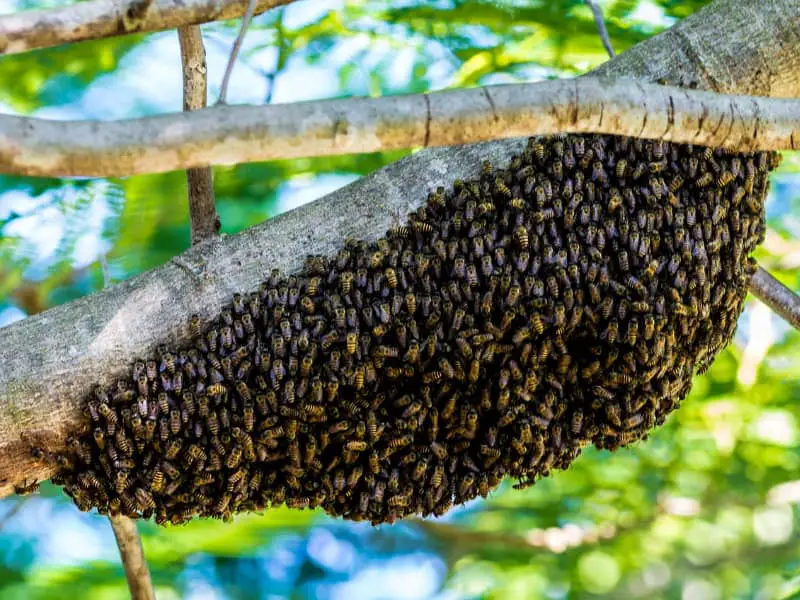
Swarm of bees in garden
Maybe you know it from stories, or have already experienced it yourself. In a swarm of bees in the garden, which has settled on a tree. For many a horror scenario, because they are afraid or at least have great respect for the bees. We show you that you do not have to be afraid and how to react correctly if a swarm of bees has settled in your garden.
Swarm of bees in the garden, what to do?
First of all, stay calm, because there is no danger from the bees. If the swarm of bees is sitting high up in a tree, you can assume that the bees will soon move on. You will see isolated bees flying around the swarm. These bees are the so-called scouts. They are looking for a new dwelling for the swarm.
As soon as one of the scouts has discovered a good place, she returns to the swarm and the other bees follow her. Usually, the bees in such a swarm stay in one place for 1 to a maximum of 3 hours until they find a better one. The duration of stay is also determined by the weather, if it starts to rain while the swarm is hanging on the tree, then they move on faster.
Swarm of bees in the garden, where to report?
If the swarm does not move on after 2-3 hours, then you should look in the phone book for a beekeeper who lives near you. You can also do this immediately after the swarm has been discovered by you. Because often the beekeeper does not get it, if a bee swarm divided and on wandering goes. But there are other possibilities.
This way you can find a masterless swarm, at the Swarm rescue report. Beekeepers are registered here who rescue bee swarms in a certain radius around their place of residence. This is especially important because the bees can not survive without the support of a beekeeper in Germany. This is due to the different mites and diseases that can affect in bee swarm. In beekeeper ensures that this does not happen.
Is a swarm of bees in the garden dangerous?
As we said, no, there is no danger from these bees. Of course, when these bees swarm, you should not run into the swarm cloud. Because easily a bee is squeezed on the body and then stings. When the bees are swarming, they are only aggressive when threatened. Because on migration they do not have to defend offspring, which would make them aggressive.
Another reason why on migration bees do not sting quickly is because they have filled their honey bladder. In this honey bladder they take a supply of honey with them, which is used as initial equipment for the new hive. With a full honey bladder, the bee can not sting so well and accordingly avoids such a situation.
Why do the bees migrate?
A swarm of bees on migration usually means that a new colony of bees wants to develop. In the wild, this is the most important process to increase the population of bees. Each bee colony has one queen, should a second queen hatch, the old queen bee leaves the hive. In the process, she takes part of the colony with her and the other remains behind.
An average-sized bee colony consists of 40,000-80,000 bees. If we now assume that 20-40 % of the colony with the old queen go on the migration, we can guess the size of such a swarm. A number of 10,000 up to 30,000 bees form such a swarm. If they all swarm at the same time, then a cloud of considerable size is on the way.
However, there are exceptions and bee colonies can divide several times. This happens when several young queens hatch at short intervals. Here, the oldest queen will also always leave the hive first. How many of the other bees follow her depends on how strong her pheromones smell. The younger a queen is, the weaker this smell is.
How far does a swarm of bees travel?
Here, the age of the queen plays a decisive role. A young queen can fly much further than an old one. Old queens often do not even manage to fly 50 m before they have to rest again. This has the advantage for beekeepers that they are easier to catch, that they usually settle near and often also in the field of vision of the old hive.
So if a swarm of bees lands in your garden, you may immediately know who the nearest beekeeper is in your area. Then go by or call him, even if it is not his bees, he will take care of the colony and, if possible, give it a new home. Should a young queen lead the colony, then distances of 2 km or more are not uncommon.
Who owns the swarm of bees in my garden?
In Germany, many things are regulated, including who owns the swarm of bees in your garden. This regulation is in the paragraphs 961-962 in the BGB. There it is stated that you may keep a masterless swarm. The swarm is masterless if the owner does not pursue it immediately or if he gives up the pursuit.
The owner of the swarm is entitled to enter other people's properties to collect the swarm. If any damage occurs, the owner must pay for the damage. So if a swarm of bees settles in your garden and no one comes, there is a possibility for you to keep this swarm of bees.
Author

-
Garden animal - A life with nature
Welcome to my animal blog! My name is Dirk and I am happy to take you on my journey through the fascinating world of animals and gardening.
Born 54 years ago, I have had an insatiable curiosity for the animal world around me since childhood. Although I have moved professionally in other industries, my true passion has always been animals and nature. It is remarkable how a small garden has become such an important part of my life.
Many of my fondest memories are associated with the animals that share our home. Whether it's the curious squirrels that scurry across the trees in the morning, the colorful variety of birds that visit our feeders, or the busy bees and butterflies that pollinate our flowers, every moment with them is invaluable to me.
This blog is my contribution to share my experiences, discoveries and insights with like-minded people. Here I will share stories of unforgettable encounters with animals, give tips on gardening and creating wildlife-friendly habitats, and take you on my journeys through nature.
Thank you so much for being here!
Cordial,
Dirk aka garden animal
Last posts
- 27. February 2024PetsVeganes Hundefutter – Grün und Gesund?
- 18. January 2024ChickensOregano für Hühner
- November 27, 2023HamsterDiurnal hamsters
- November 24, 2023HamsterHamster hammock

